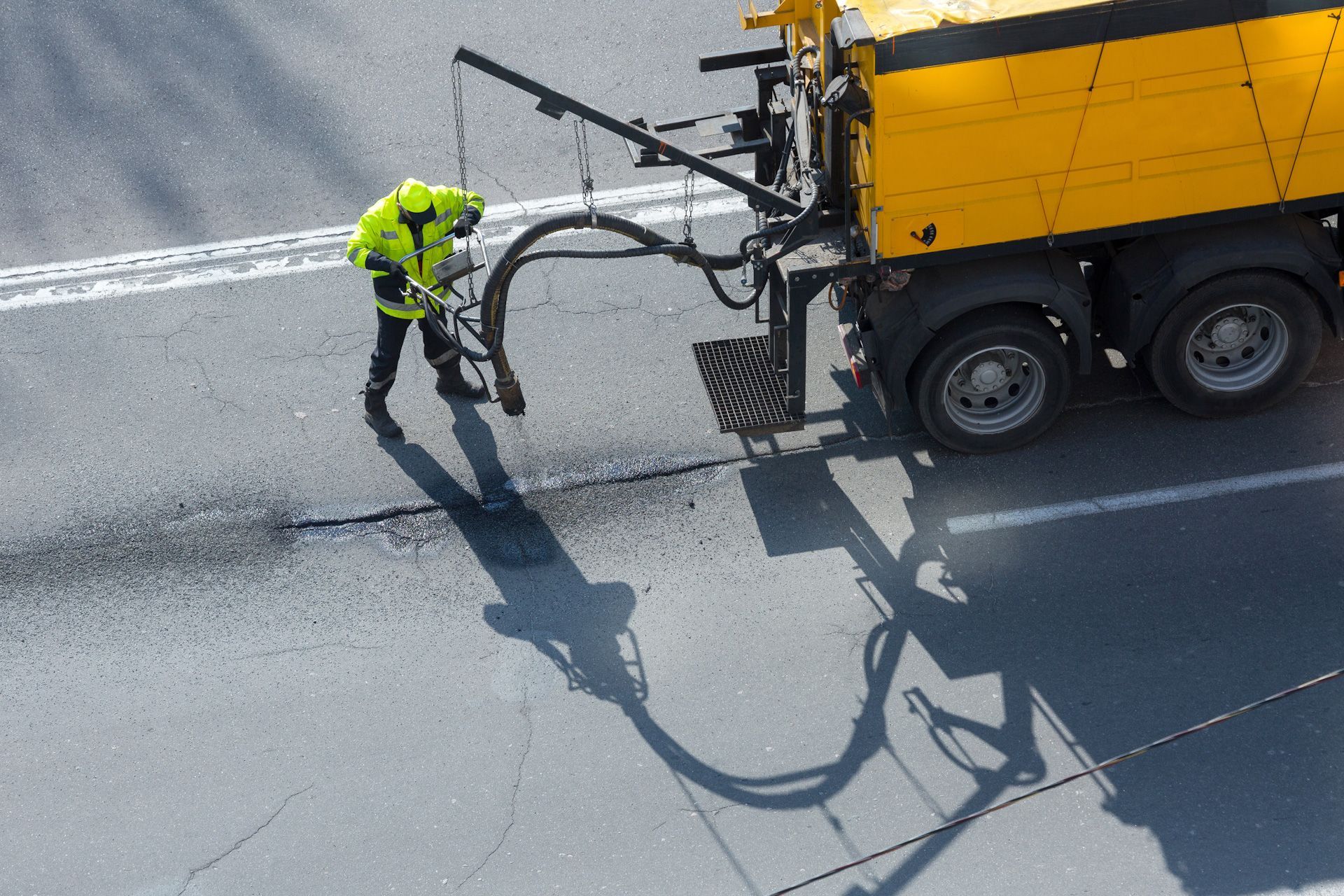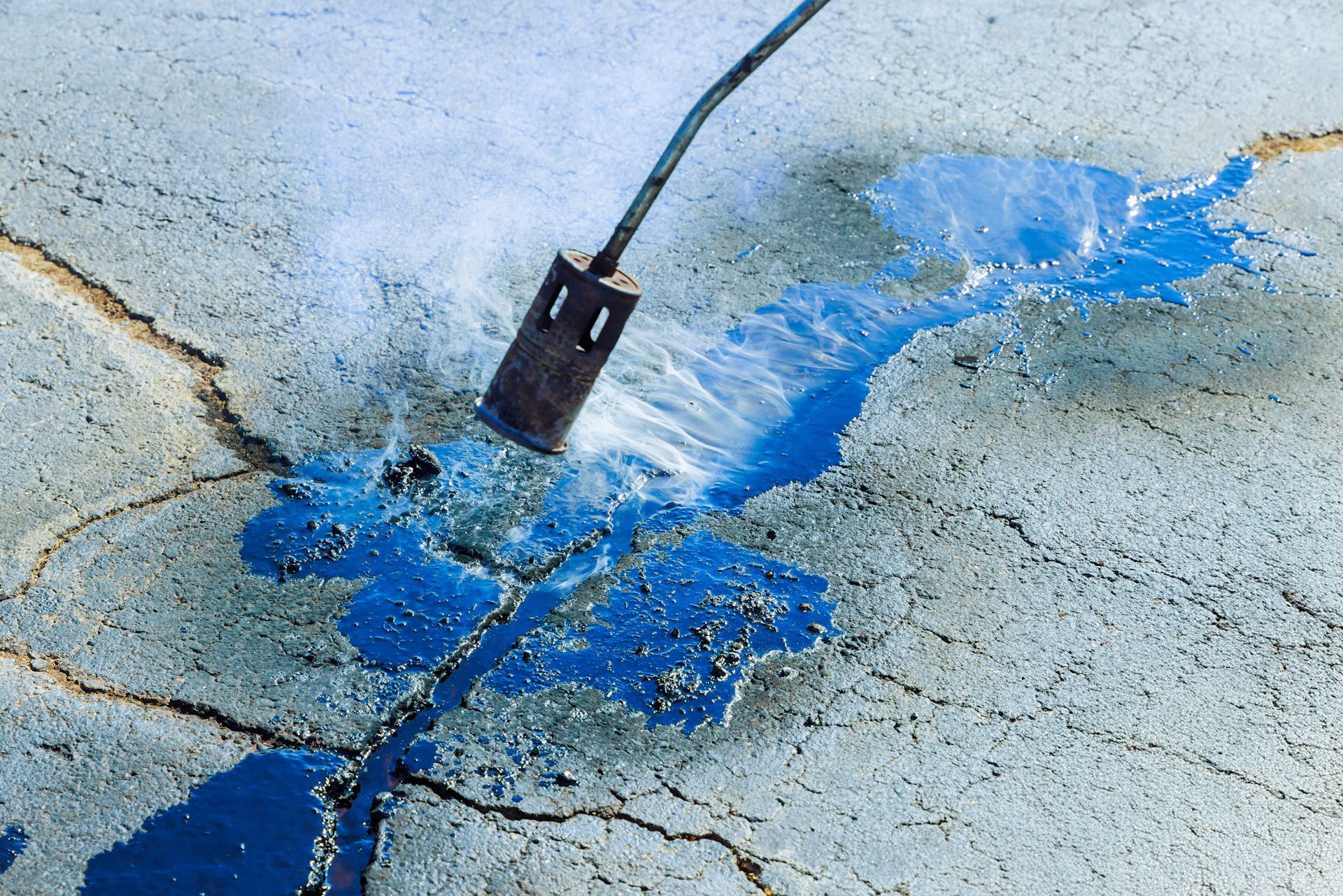Crack Filling Services
Commercial Crack Filling in Brooklyn, NY
Cracks in asphalt pavement are among the earliest signs of wear and damage, especially on commercial properties that experience heavy traffic. In Brooklyn, NY, the freeze-thaw cycles, precipitation, and UV exposure can quickly turn small cracks into serious structural issues if not addressed. At US Asphalt, our commercial crack filling services are designed to seal these vulnerable openings before they lead to more costly repairs such as potholes or base failure.
The Role of Crack Filling in Pavement Preservation
Crack filling is a preventative maintenance technique used to extend the life of asphalt pavement. By sealing the cracks that form on the surface, water is prevented from seeping into the sub-base. This reduces the chances of erosion, heaving, and further cracking caused by temperature fluctuations or moisture-related degradation.
In commercial settings, crack filling is a critical component of long-term pavement management. Parking lots, loading zones, access drives, and other high-traffic areas all benefit from regular monitoring and sealing of surface cracks. Addressing cracks early helps delay more intensive procedures such as patching or resurfacing.
Surface Crack Behavior in Commercial Areas
Asphalt expands and contracts due to temperature changes. When this occurs repeatedly, cracks appear along stress points, edges, or joints in the pavement. Left untreated, these cracks widen and deepen, often collecting debris, moisture, and chemicals that accelerate surface failure.
Differentiating Crack Types
Not all cracks are the same. Some are surface-level and can be easily sealed, while others may indicate deeper issues. Understanding these differences helps determine the most effective repair strategy.
Cost-Effective Maintenance Strategy
Crack filling is among the most affordable maintenance services for commercial asphalt in Valley Stream. Compared to full-depth patching or overlays, it allows property managers to preserve their investment with minimal disruption or downtime.
Crack Filling Process and Materials Used
At US Asphalt, we use commercial-grade materials and industry-standard techniques to ensure long-lasting results. The goal is to create a flexible, weather-resistant seal that bonds to the asphalt and moves with it through seasonal changes.
Cleaning and Preparation
Before any filling begins, each crack is cleaned thoroughly to remove dust, vegetation, and debris. Compressed air and wire brushes are commonly used for this stage, which ensures that the filler material will adhere properly to the sides of the crack.
Routing (If Needed)
In certain cases, cracks are routed to create uniform width and depth. This provides a better bonding profile for the filler and enhances the lifespan of the repair. Routing is typically used for wider or irregularly shaped cracks in commercial surfaces.
Hot Rubberized Crack Filler Application
A rubberized asphalt emulsion is heated and applied into the crack using specialized applicators. This material remains flexible even after cooling and can expand and contract along with the pavement. It also forms a waterproof barrier to keep moisture out of the sub-base.
Finishing and Cooling
After application, the filler is leveled and allowed to cure. In high-traffic commercial areas, a dusting of sand may be added to prevent tracking and facilitate quicker reopening of the area.
Commercial Areas That Benefit Most from Crack Filling
In Brooklyn, NY, commercial properties see consistent wear from vehicle traffic, seasonal weather, and heavy-duty equipment. Crack filling is especially important in these common areas:
Parking Lots
Even small cracks can lead to safety hazards or property damage in parking lots. Sealing cracks early helps maintain a smooth surface for customers, tenants, and employees.
Delivery and Service Roads
These roads experience frequent turning, braking, and load stress, which can cause fatigue cracking. Sealing them helps prevent further breakdown and preserves base strength.
Walkways and Entry Paths
Cracks in walkways and pedestrian zones can become trip hazards or grow into larger liabilities. Timely crack sealing keeps these areas compliant and safe for foot traffic.
Dumpster Pads and Utility Access Points
These areas are prone to surface breakdown due to frequent use and exposure to chemicals or moisture. Crack sealing helps mitigate damage between full repairs or resurfacing cycles.
Timing and Frequency of Crack Sealing
In Brooklyn’s climate, crack sealing is best performed during dry weather when pavement temperatures are moderate. Spring and fall are often ideal times for crack filling, allowing repairs to set properly before extreme weather conditions return.
The frequency of crack sealing depends on traffic levels, material aging, and the presence of surface movement. For commercial properties, an annual inspection followed by targeted sealing is a standard practice. In high-use areas, multiple applications may be required throughout the year.
Crack Filling as Part of a Broader Maintenance Plan
Crack filling is most effective when included in a broader pavement maintenance strategy. On many commercial properties, this includes sealcoating, patching, and line striping. Filling cracks before applying sealcoat helps create a uniform surface and enhances the overall durability of the asphalt.
As a standalone service, crack filling provides immediate protection and restores the integrity of the surface. When integrated into long-term maintenance plans, it becomes a proactive investment in property preservation.


